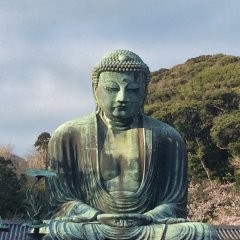Overview
Wedged between the Seto Inland Sea to the west and mountainous terrain to the east, Uwajima City is a castle town that is easily explored in a day or two. The best times to go are in the spring when the air is perfumed with mikan citrus and the mountainsides turn pink, or for the exuberant three-day summer festival in July.
Sightseeing
Commanding a view of the city atop a steep hill is Uwajima Castle. One of the twelve castles of Japan that retains an original keep, it dates from the 1600s. This one is perhaps the smallest of them all, but the view of the sea and city below make up for its diminutive size.

The Date clan warlords who ruled from Uwajima Castle, built a serene garden, Tenshaen. A heart-shaped pond, wisteria trellises, and stone statuary soothed the retired Date Munenori in the 1860s. The garden is recognized as a national place of scenic beauty.
Although the region is abundant in agricultural land, there are some challenges to farming the steep hillsides. Yuzumizugaura, a farming community, is famous for its solution, terraced cultivation. Narrow terraces climb up the hillsides from the shore of the Uwa Sea. The village can be accessed by ferry from Uwajima's port.
When walking the streets of Uwajima, look down and you will likely spot manhole covers with images of huge bulls. These celebrate one of the city's traditions, bull sumo. This spectacle is held five times a year at the dedicated bull sumo arena.
Temples and Shrines
The spiritual and cultural center of the city, Warei Shrine. The local people reverently call it Warei-sama, and it commands respect. The shrine, protector of industry, survived a World War II air raid and is considered a place of peace and safety. During the carnival and parade in July, ushioni, huge demon bull floats, make an appearance here.
The density of the city makes it easy to visit two of the 88 Shikoku temple pilgrimage spots, Butsumokuji Temple (No. 42) and Ryukoji (No. 4). Lesser-known temples and shrines are scattered across the city. A recommended stroll is from Uwatsuhiko Shrine, site of autumn festival events, to Kongozandairyuji Temple which has a tranquil garden and the resting places of the local lords.

Perhaps Uwajima City's best-known shrine is Taga Jinja. The oldest shrine in the city houses a museum dedicated to fertility, with all the paraphernalia you might imagine (and maybe some you couldn't).
Dining and shopping
Uwajima, like Ehime Prefecture destinations, is abundant in citrus fruit and seafood, especially sea bream. Two local favorites to enjoy the local cuisine are Izakaya Gaya and Kadoya. Both are well-loved institutions in the city, the latter being a good choice for lunch.
The subtitle says Uwajima is a jewel, and it produces them, too. In the city center, you'll find many pearl merchants with both extravagant and affordable pieces of jewelry at various price points.
Staying and Relaxing
Staying in Uwajima can range from luxury to budget. Kiya Ryokan, a restored Taisho Era ryokan, offers stays for groups of two or more. An alternative is Uwajima Youth Hostel near Uwatsuhiko Shrine. Ask the proprietor for advice about hiking the mountain that looms over the hostel.
The city also has a number of onsens to wash away your cares. Overlooking river scenery and with a rustic atmosphere is Yasuragi no Sato.





























I've been in Uwajima just once, and didn't have much time for sightseeing. But my whole reason of going there was the Togyu, the bull wrestling. Which was quite the experience! And I was glad to see that, different from other kinds of bull fighting in the world, this was (mostly) harmless to the animals. Traditional entertainment with respect for the animals!
If you’re there at the end of October, there’s another festival, the eight deer dance. It’s spooky and beautiful.
About the Bull Sumo - I hope the bulls don’t get dinged up too badly.
As for the togyu, the bulls do still have their horns, that seems to be the biggest danger. During one of the duels one bull wounded the other, that duel was stopped right away to treat the wound. Not sure how much it helped, since the same bull went back into the fight only minutes later and still seemed to be bleeding a bit. Nevertheless there seemed to be a lot of respect for the animals, and all bulls went home alive and well. For the most part they are just pushing each other around.
It might have helped that the day before I visited the Tosa Dog Museum in Kochi, and seen some video's of those fights. That's some animal cruelty I'd rather not support.
It's not quite tropical, but Uwajima City has mild winters.